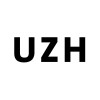
Vitreopapillary Interface and Optic Disc Morphology
Posterior Vitreous DetachmentVitreomacular Traction2 moreThe vitreous fills the posterior chamber of the eye and is firmly attached, at the posterior pole, to the macula and the optic nerve head (ONH). With formation of a stepwise posterior vitreous detachment (PVD) exerted tractional forces could influence retinal functioning. Especially in patients with glaucoma the influence of vitreous traction to the ONH could mask progression, interfere with current imaging techniques and even be a cause of ONH hemorrhages. Therefore the aim of this study is to investigate whether vitreopapillary traction has a significant effect on diagnosis and follow up of glaucoma patients.

Evaluation of Blood Flow Regulation With Laser Speckle Flowgraphy
Low Tension GlaucomaThe study includes Caucasian patients with diagnosis of normal tension glaucoma and age- and sex-matched healthy individuals. Measurements of optic nerve head blood flow will be performed with laser speckle flowgraphy (LSFG). Also, the intraocular pressure (IOP), systolic and diastolic blood pressure, heart rate (HR), mean arterial pressure (MAP) as well as ocular perfusion pressure (OPP) will be evaluated. After baseline measurements individuals will be asked to ingest 800 ml of water in less than five minutes. Measurements will be repeated after 15, 30 and 45 minutes.

AADI Glaucoma Shunt - a Quality Control Study
GlaucomaTo prospectively investigate the effect and safety of implantation of the AADI glaucoma tube in eyes with medically intractable glaucoma in the period 2019 to 2020, at the Department of Ophthalmology, Odense University Hospital. The device will be implanted in eyes instead of the Bearveldt drainage device. Patients and data are prospectively registered to evaluate the effect and safety of the AADI device.

Diurnal Fluctuations of Intraocular Pressure in EX-Press Valve Blebs in Glaucoma Patients
GLAUCOMADiurnal fluctuations of intraocular pressure in EX-Press Valve Blebs in Glaucoma Patients Intraocular pressure (IOP) reduction is the mainstay of glaucoma management. (1) Open-angle glaucoma (OAG) is generally managed by decreasing the intraocular pressure (IOP) to a level that the physician believes will prevent further glaucomatous damage. However, in a significant proportion of patients, the visual fields continue to deteriorate in spite of office pressures within the range of normal values (8). It has been suggested that the progressive damage in some cases could be caused by peaks of IOP or diurnal IOP variability not detected by tonometry during office hours. It is possible that certain drugs or surgical interventions are more effective than others in dampening these fluctuations. The purpose of our study is to compare the diurnal IOP fluctuations in glaucoma patients treated with medications or Ex-press filtration surgery.

Determining the Clinical Utility of Using Virtual Reality Headsets to Assess Visual Function in...
GlaucomaTo validate a new virtual reality (VR) based visual field test against the gold standard clinical perimetry test (Humphrey Visual field test 24-2).

Glaucoma Screening Using Dynamic Analysis of Computerized Pupillary Light Reflex Assessment Device...
Primary Open Angle GlaucomaPrimary Open-Angle Glaucoma4 moreTo explore an effective diagnostic tool of glaucoma through the dynamic analysis of computerized pupillary light reflex assessment device (CPLRAD) pupillography based on iris recognition techniques and investigate its feasibility in glaucoma screening.

Study on Intraocular Structural Parameters and Surgical Effect Before and After the Onset of Malignant...
GlaucomaMalignant GlaucomaIn this retrospective observational study, we collected intraocular structure parameters of malignant glaucoma and primary angle closure glaucoma. Anterior chamber depth (ACD) and width (ACW), lens vault (LV), ciliary process-ciliary process distance(CCD), trabecular-ciliary processes distance (TCPD), ciliary body max thickness (CBMT), peripheral iris thickness (PIT), trabecular ciliary process angle (TCPA), and anterior vault (AV), were measured by ultrasound biomicroscopy. Other parameters measured by A-scan ultrasonography and optical coherence tomography. To analyze the high risk factors and the possible pathogenesis of the disease and discuss the long-term effect of different treatment methods.

Study on Micro-invasive Glaucoma Surgical (MIGS) Devices
GlaucomaGlaucoma is an ocular condition in which optic nerve damage occurs, frequently in the presence of increased pressure within the eye. Micro-invasive glaucoma surgery (MIGS) refers to a new group of surgical procedures which are characterized by the following features: high safety profile, minimal trauma, ease of use and rapid recovery. There are 3 main groups of MIGS devices, which drain fluid to different regions in the eye: the Schlemm's canal, the suprachoroidal space and the subconjunctival space. Though MIGS devices were introduced in the United States of America, Canada and Europe more than 5 years ago, and have attained the CE mark and FDA approval for some devices. Studies have shown that these devices have a high safety profile and are effective (1-5). However, MIGS devices are only recently available in Asia, and data on their clinical outcomes in Asian patients are limited.

Efficacy of Selective Laser Trabeculoplasty in Patients Under Treatment With Topical Prostaglandines...
GlaucomaOcular HypertensionRetrospective analysis of efficacy of selective laser trabeculoplasty in patients under treatment with topical prostaglandins compared to patients without topical prostaglandins is performed. Inclusion criterion are patients with glaucoma or ocular hypertension, who underwent treatment with selective laser trabeculoplasty due to insufficient control of intraocular pressure during their routine treatment at the University Hospital Zurich / Division of Ophthalmology.

Ultrasonic Evaluation of Ocular Tissues
GlaucomaTumors1 moreThe objective of this research program is to improve diagnosis and treatment monitoring of ophthalmic disease by improving diagnostic ultrasound techniques. The program explores the use of novel signal and imaging processing techniques towards this end.
